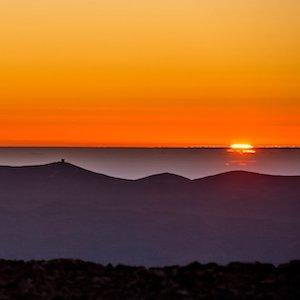The Atacama Desert is an inhospitable place.
Covering some 40,000 square miles, the desert is located mostly in Chile, but its outer regions stretch into nearby Peru, Bolivia, and Argentina. Given some of the striking imagery from the area, you could be forgiven for thinking you are gazing at a photograph of Mars.
Indeed, the Atacama Desert contains the driest spot on Earth. According to AccuWeather, "Arica, one of the desert's largest cities, receives an average annual rainfall of 0.76 millimeters, about the height of a flea egg."*
There are several other striking features. The Atacama has an average elevation of 13,000 feet and often boasts an entirely cloudless sky. The atmosphere contains very little ozone, and the region is located near the Tropic of Capricorn. Because of all this -- the elevation, proximity to the equator, and meteorological phenomena -- researchers have now shown that Atacama can claim yet another distinction: It has the highest level of surface ultraviolet (UV) radiation on Earth.
By acquiring data on various parameters -- such as solar zenith angle, total ozone, cloudiness, aerosols, and ground reflectivity -- scientists were able to produce a map depicting the UV Index of the region. The UV Index is a standard set by the World Health Organization that advises people on the dangers posed by UV radiation. To put things into context, a score of 8-10 is considered "very high," and 11+ is considered "extreme." The EPA warns, "Take all precautions because unprotected skin and eyes can burn in minutes."
What is the UV Index in the Atacama Desert? In the summertime, the entire region is above 11. Some places in the desert at particularly high elevation can reach a UV Index of 20. (See figure.)

The Health of the Atacama Desert Dwellers
Believe it or not, about 1 million people call the Atacama region home. Though the paper did not discuss health effects (that was not its goal), it is tempting to speculate about the health of the people who live there. Do they suffer from higher rates of skin cancer? Or have they adapted to live in such harsh conditions?
Both are a distinct possibility. Citizens living in the High Desert of Oregon, for instance, exhibit high rates of skin cancer. On the other hand, last year, researchers showed that people in the Atacama have acquired mutations that allow them to tolerate higher levels of arsenic, which is naturally prevalent in their environment.
Perhaps they have evolved to tolerate higher levels of UV radiation, as well. It certainly would be intriguing to find out.
*Note: One team of researchers concluded that María Elena South was the driest spot in the Atacama.
Source: R.R. Cordero, et al. "Ultraviolet radiation in the Atacama Desert." Antonie van Leeuwenhoek 111(8): 1301-1313. Published: August 2018. DOI: 10.1007/s10482-018-1075-z




